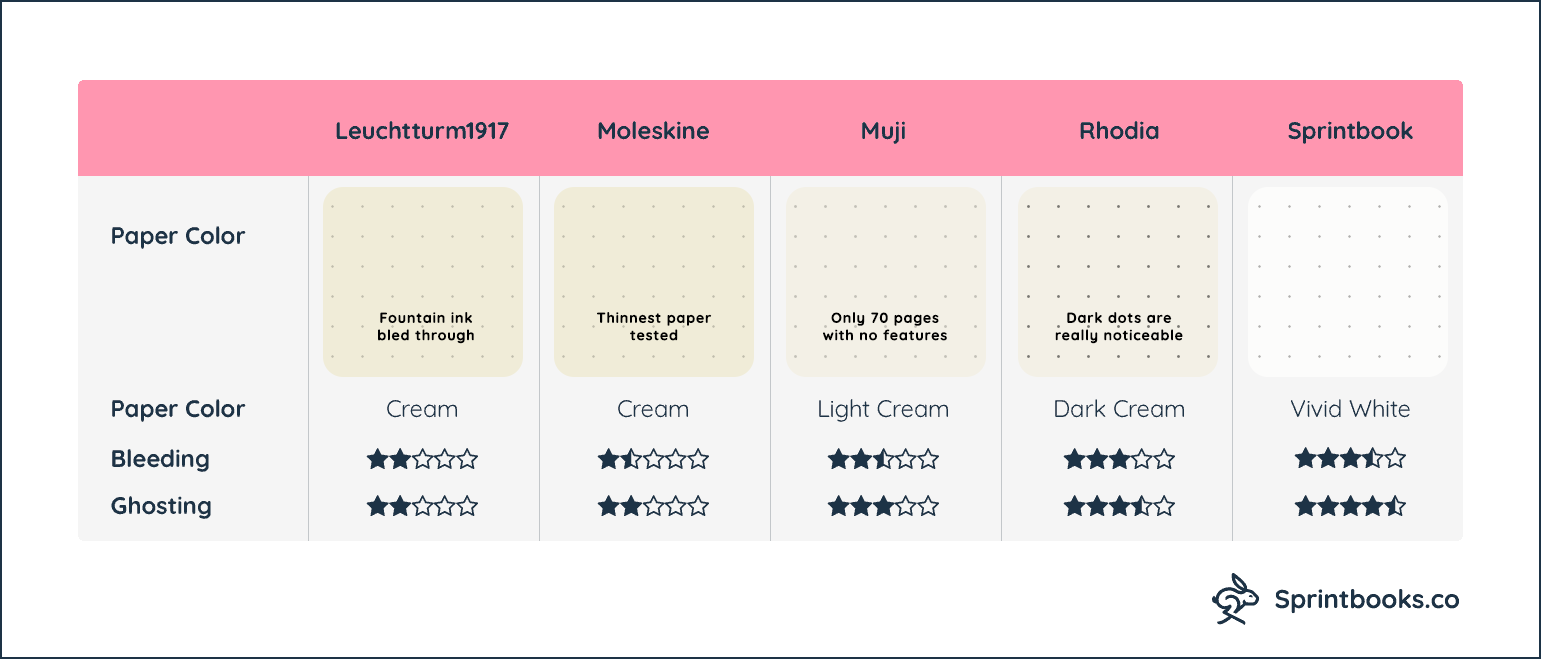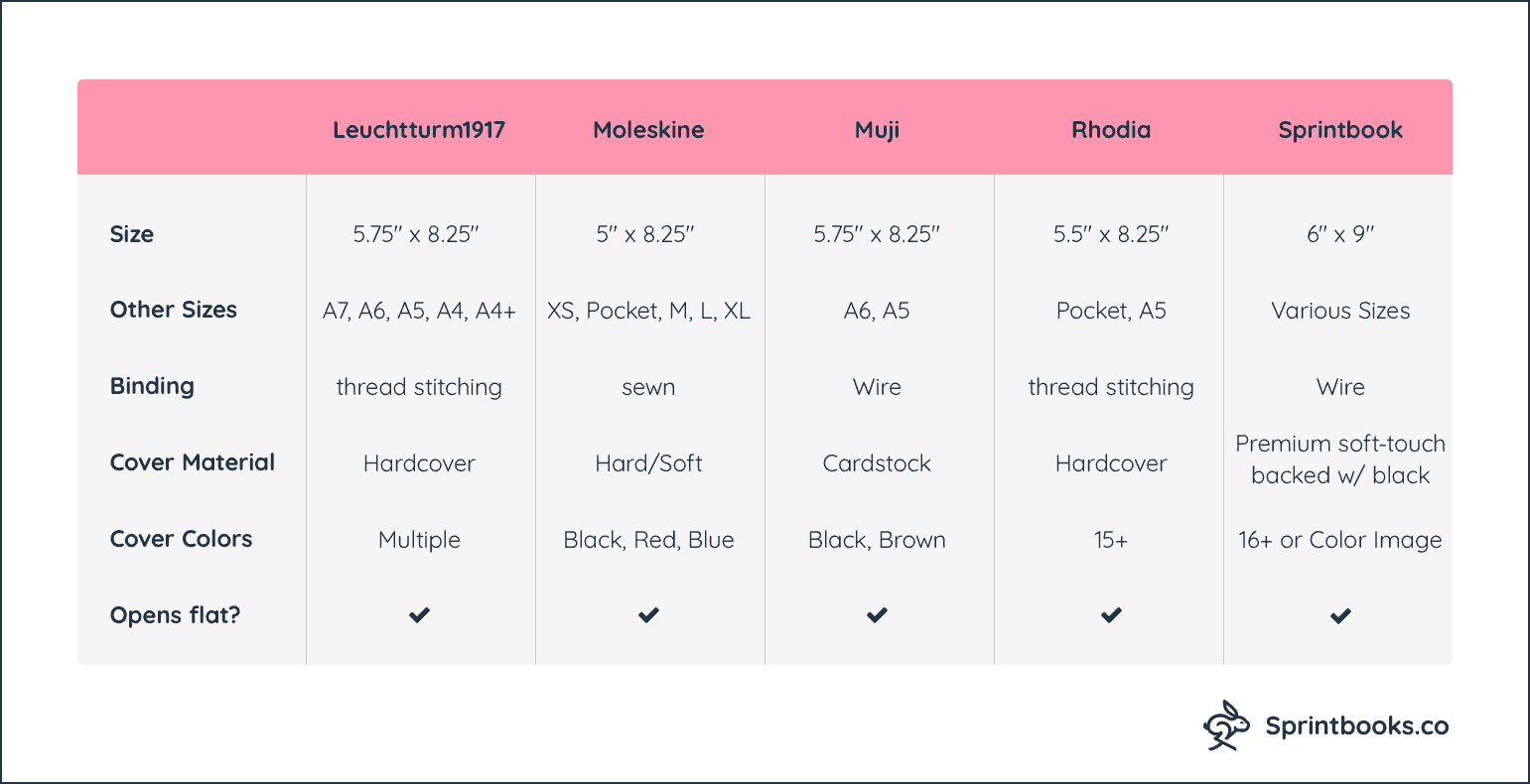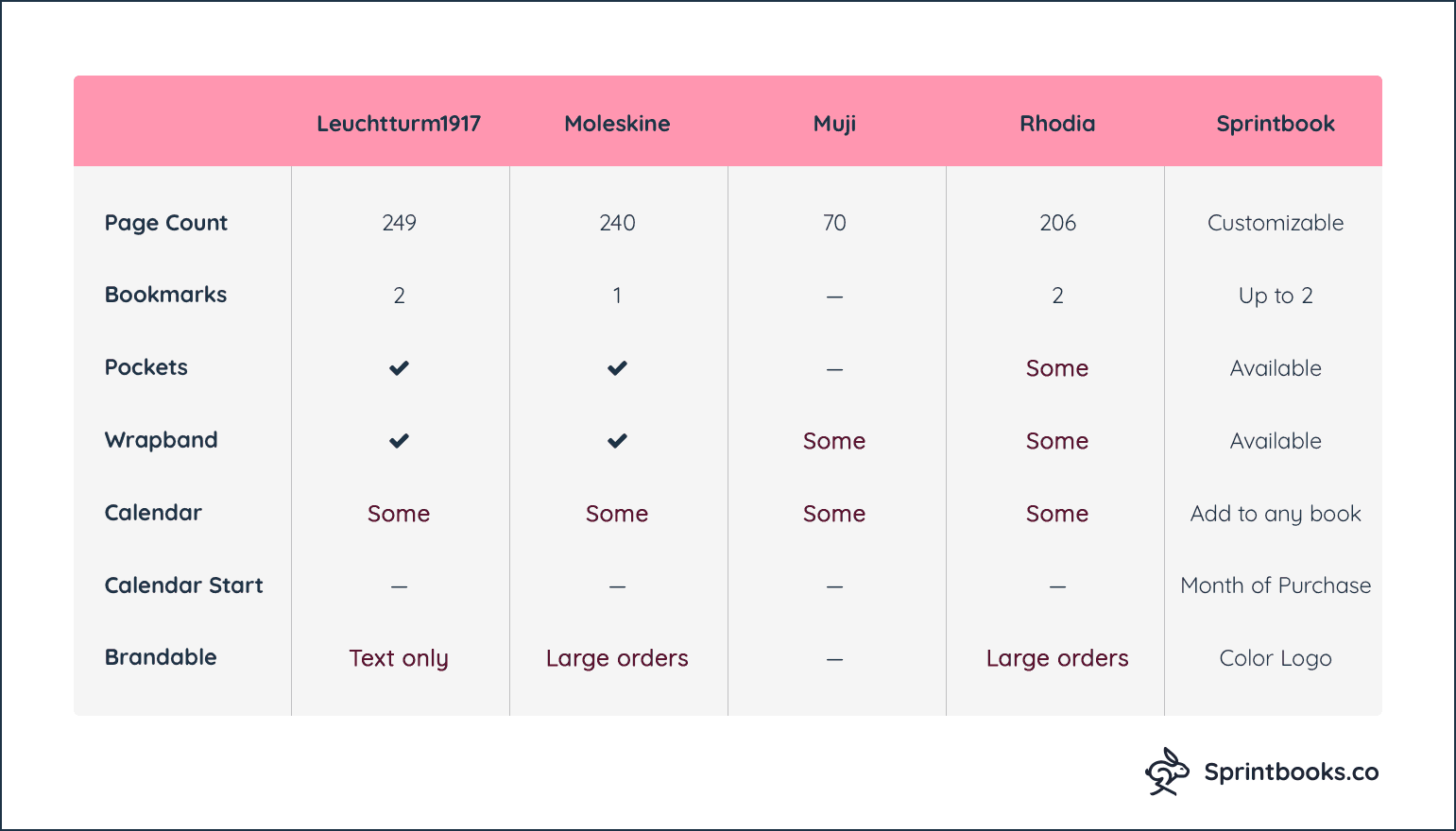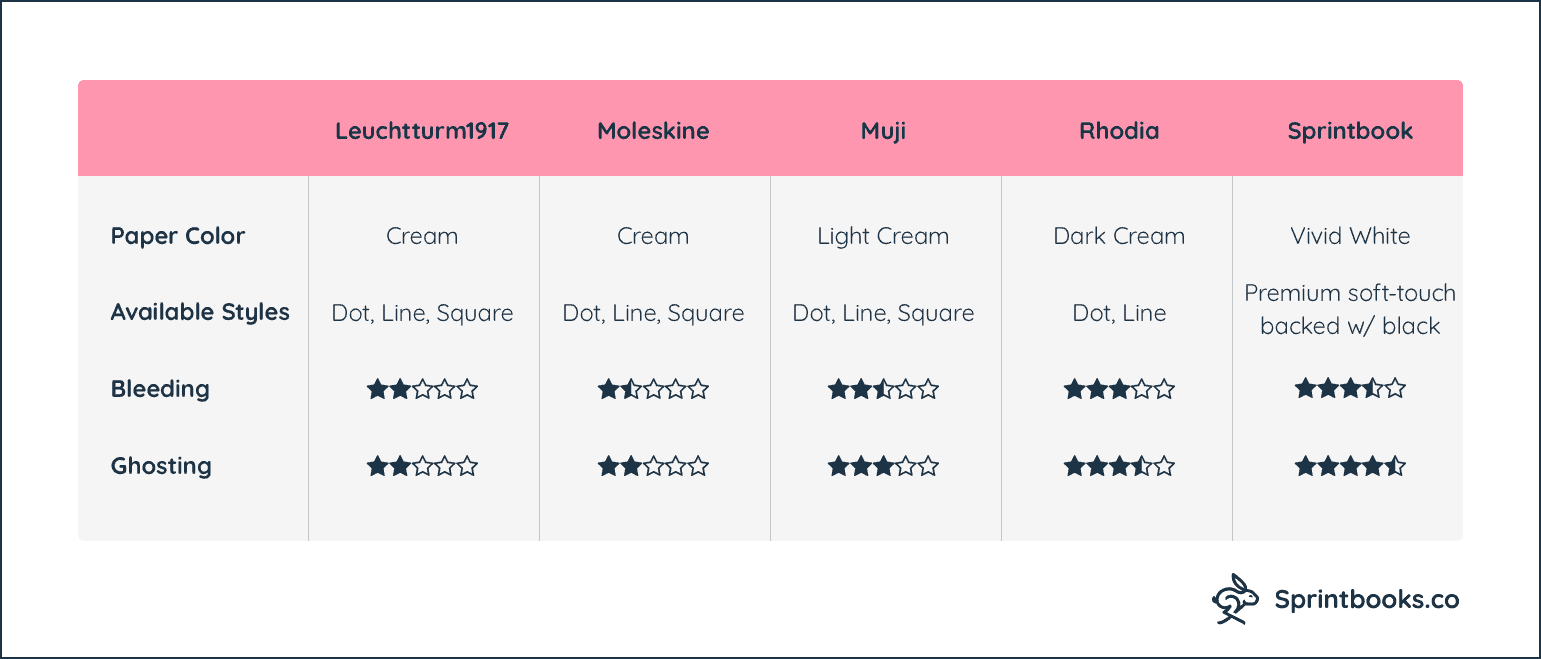I wiser person than I once told me, "Necessity may be the mother of invention, but then paper and pencil are the tools." — Or at least they have been for quite some time.
But we put a lot of thought, money, and energy into the thing doing the writing (or drawing), and nearly none at all into paper. This humble white sheet, we thought, so unassuming — but even that was wrong. When you look at the notebooks we tested today, you realize white is not white:

So we set out on a mission to determine what factors make a good notebook in ways that go beyond even just the paper (and bring it all together for you). We chose a few popular notebook brands, and considered important options like personalised Moleskine notebooks, etc. Here are our results.
Firstly, we need to establish a set of priorities for a successful notebook: (1) Overall Specs. (2) Number of features. (3) And importantly to anyone who cares, the paper quality! It may not sound like much, but it's more important than, say, the options for by-the-numbers a design your own moleskine, Leuchtturm, Rhodia, etc.
Straight-up Specs
All of the notebooks tested came in various sizes, with Muji and Rhodia coming in only two. We looked at one size, roughly 5" x 8". The Moleskine was the smallest notebook, while the Sprintbook was the largest at 6" x 9" — with plenty of room for notes and more. Each notebook has gone a different way with their binding, ensuring a good variety. One thing we looked at, was if the book would "lay flat" — a very important metric. All seemed to pass this test, though some better than others. We also looked at cover options and colors. The Sprintbook was by far the leader here with the most number of colors with soft-touch finish (and with the choice of putting your logo on the cover).

Features Showdown
Next, we wanted to really get into the weeds and compare the features each notebook has available. This varies a lot between each book. For example, a custom printed Moleskine notebook looks nice, but Leuchtturm allows embossing. So there are some clear differences that emerged. While some books offer a calendar (or you can purchase a monthly/daily planner), they are all locked to the year, and run January to December. Only Sprintbook offered a "time of purchase" calendar that was fixed to when we ordered the book. Something else that stood out was the branding options. Fully 4 of the 5 books we tested were brandable. But how they do it is where the differences can be found. Leuchtturm seems to only offer text personalization with two fonts, though they will emboss, which is cool. However, their website indicates full logo options, but we could not find it at the time of writing. But at least you only have to buy one book. With Moleskine and Rhodia, however, you must buy in bulk. Sprintbook was the only option offering full logo service on the cover with the purchase of a single notebook, though it's not embossed.

Papers, Please
The Leuchtturm has the highest page count, which made sense, since it had the thinnest paper (along with the Moleskine). Stunningly, the Muji had only average bleed and ghosting resistance, even though it was the smallest page count. None of the notebooks tested compared to the Sprintbook, with the highest gsm. The Sprintbook wins here, and takes home creds for being recycled paper with, and we're told, 95% of waste diverted back into the paper milling process (so it doesn't end up in a landfill). So take the Sprintbook, especially if you are tired of cheap cream-colored leaf.

by Sasha Gray